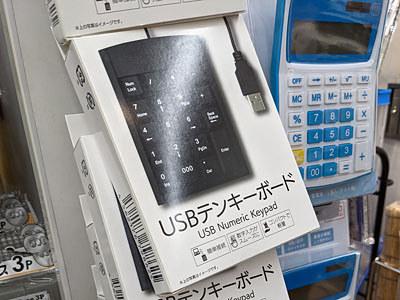I'm in trouble if it's not in the way
The most common notebook PC at hand is Panasonic's Let's Note.
Barrel DC-I, HDMI, Thunderbolt 4x2, audio/microphone conbo, USB 3 on the left side.There is 0, wired LAN on the right side, USB 3.0 × 2, equipped with a mini D-SUB15 pin and an SD memory card slot.A total of 11 pieces.
The types of ports required are different for each person.That's why it's one way to equip everything, and Let's Note stubbornly sticks to that policy.
Personally, what ports to use everyday, one Type-C port for power supply and video output, USB 3.In 0, the Logitech mouse and the keyboard receiver, the Unifying adapter, is kept on.Many of the data exchanges are more common through cloud storage, and the network is used to use Wi-Fi and external displays on USB Type-C DP ALT mode.

We rarely use wired LAN or mini D-SUB15 pin.Also, USB 3.Even if there is no 0, if you need an external mouse, you should connect it to Bluetooth.So it doesn't have to be.
HDMI is a subtle standing position, and when you try to output it to an external display when you bring your laptop, the display is not always possible to enter video in DP ALT mode in USB Type-C.The same is true for home appliances like TV.Therefore, HDMI is quite frequently used.It is one of the few ports that may be troubled if it disappears.
Let's Note has a terminal for DC-IN.If the power supply is supplied from here using the bundled AC adapter, it will operate even if the detachable battery is removed.
Previous Let's Note could not do so with USB PD power supply.When the battery was removed, the power was turned off on the spot and the system dropped.In other words, Let's Note did not completely trust USB PD.If the battery was not installed, it was a policy that it would not be able to operate alone and would not let it do.
However, in the latest FV series, even if the battery was removed, it continued to operate if there was enough power supply in USB PD.This is a little nice.This has become one of the ports that do not have DC-IN without any problems.If the opportunity to go so far is reduced, it is better for mental health to remove the detachable battery.However, if the power of more than 60W cannot detect it, it will fall as before.
The reason for supplying power using the USB Type-C port is because you want to share other devices and power adapters.USB PD can do that.You can use the same adapter on any laptop, and you can charge it with a smartphone, a mouse, or a wireless earphone.Only one power adapter to carry when you go out is fine.
I used to use the SD memory card slot sometimes before.During the long -term business trip, when the remaining capacity of the memory card attached to the camera was reduced, it was useful to avoid the photos taken to a notebook PC.Recently, if it is directly connected to the USB terminal of the camera with a cable, the data can be transferred at the worst of Gen1 at the 5Gbps speed, so the memory card is rarely removed from the camera.The number of cameras with USB Type-C ports has also increased.
This eliminates the accident that forgot to return the memory card after the copy.Of course, there may be a need for a higher -speed transfer, but those people will probably use CF Express in the external card reader of the high -speed bus.The photo shows the camera immediately after shooting with Bluetooth, and is transferred to a smartphone, and is uploaded to the cloud as it is.So it's not perfect for backups, but I'm not very worried.


